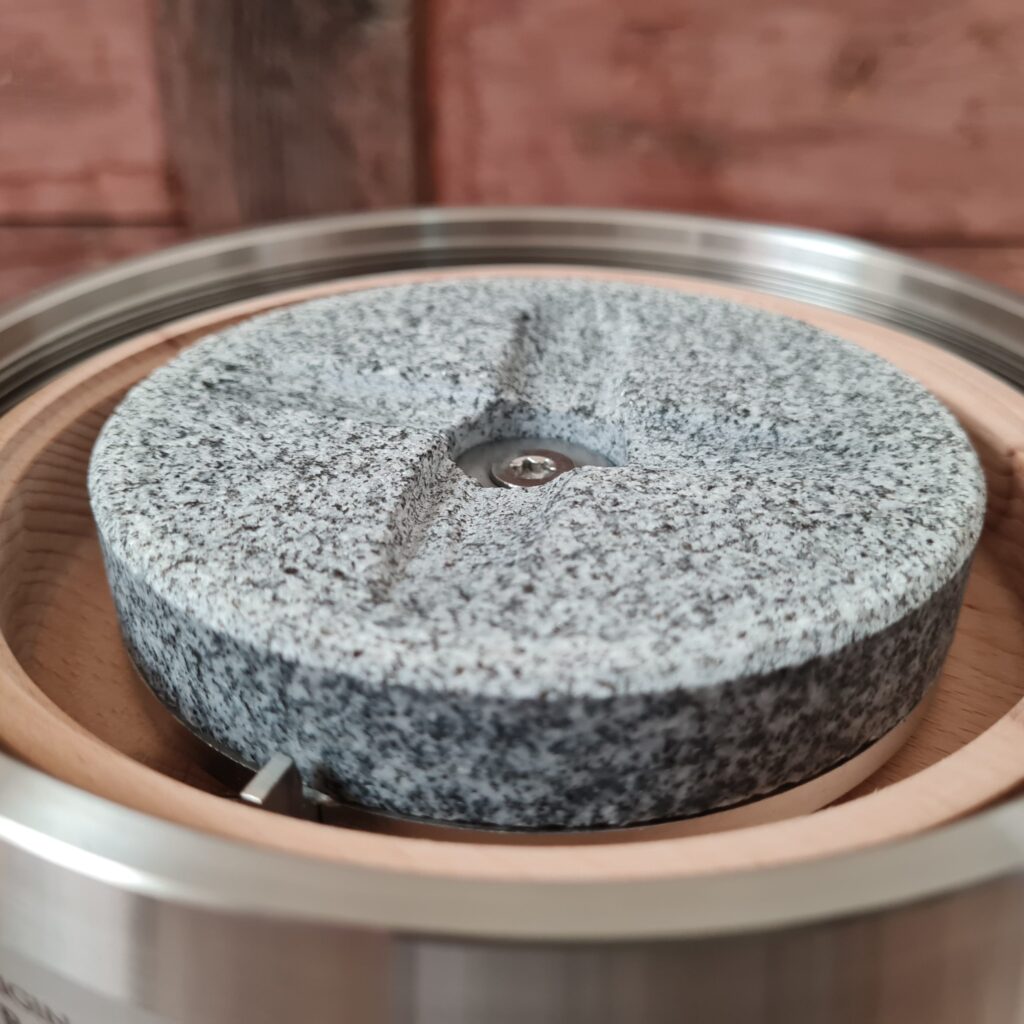
The invaluable importance of freshly milled flour has become much more prominent in recent years. More and more people are looking for a way to grind their own grain to bake their own bread.
This requires a mill, and making the right choice is often difficult for the non-expert. Here we show the differences that you should be aware of:
The type of millstones and how they are made
Grinding wears down the millstones – but where does the abrasion go? Into the flour!
Corundum ceramic grinding stones are artificially produced and contain aluminum oxide
Artificially produced corundum-ceramic grinding stones are often referred to as natural stone mixtures or as natural, beautifully colored stones.
If you are wondering why artificial stones are used, the answer is very simple: artificial stones are fired in an oven (like ceramics) and not laboriously extracted from nature in a mine.
Corundum-ceramic grinding stones therefore already have a prefabricated, desired shape and grinding geometry. Corundum is a modification of aluminum oxide with the chemical designation α-Al2O3
Although artificially produced corundum-ceramic grinding stones can provide good grinding results, they also involve certain risks. Due to the artificial composition of the stones, there is a risk of particles coming loose from the grinding stone and getting into the flour. This can happen if there are stones in the grain that have not been removed before grinding. This can not only lead to unpleasant surprises when preparing food, but also to damage to the teeth. Who doesn’t know the crunch of sand in bread or cake? Who has never bitten a stone in bread?
This is virtually unheard of with natural stones! Because at Salzburger Mühlen your grain bites on GRANIT.
Natural granite stones are “formed” over thousands of years in nature and are therefore inert. This means that the bricks are not assembled and do not contain any artificial binding agents!
Extraction and processing is therefore much more complex and cost-intensive. After the large, rough blocks of stone have been quarried, they are processed into small, round slices. Then comes the most important and precise work: piece by piece, by hand, the blanks are milled and ground by our employees.
Each pair of stones is unique and must be precisely matched.
This means a lot of work for us, which must be done with great experience, but for you: the finest flour, which emphasizes the character and taste of the grain and preserves the essence of nature.
Thanks to the durability and naturalness of the granite stones, we are setting a further example for a more environmentally friendly future.
Address:
Gasteigweg 25,
5400 Hallein
Austria
Opening hours:
Monday to Thursday: 09 – 16:00
Friday: 09 – 12:00
Contact:
Phone: +43 6245 83282
E-mail: info@agrisan.at
Address:
Gasteigweg 25,
5400 Hallein
Austria
Opening hours:
Monday to Thursday: 09 – 16:00
Friday: 09 – 12:00
Contact:
Phone: +43 6245 83282
E-mail: info@agrisan.at